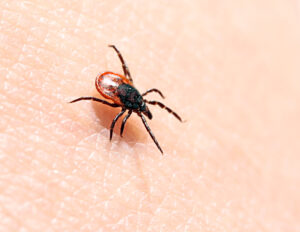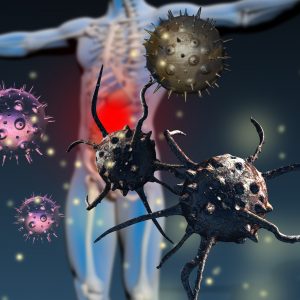
Leaky Gut, Chronic Disease, & Long Term Health
Leaky Gut This blog discusses the very important health issue of leaky gut. You will learn: What is the gut & the gut microbiome What
If you are a doctor or clinician looking to make a bigger impact on the world, have more job satisfaction and have up-to-date protocols and treatment solutions for your patients, check out our free functional medicine training led by functional medicine expert, Dr. Miles Nichols below.
Plus additional BONUS training videos on treating tough cases of brain fog and cognitive impairment!!
In this blog, we will look at Lyme Disease and the growing threat that it has become. You will learn:
Do you know what Lyme Disease is and how it spreads? Do you or your clients know why Lyme Disease is becoming increasingly common? If you want to know more about this growing threat and how to best optimize the health of your clients, please read on for answers!
Do you get stuck clinically with chronic symptoms in your patients? Would you like to have a larger impact on improving your clients’ issues?
The key to optimal health is an individual approach using nutrition, lifestyle and exercise. To improve your patients’ quality of life, you need to identify and address the root causes. Our functional medicine course will teach you how to do this. Look into our functional medicine school to have a greater impact on improving your client’s lives.
** Please note: If you want the short summary version of this article, then please click here.
What is Lyme Disease (LD)?
Lyme Disease is a tick-borne illness. It is caused by the bacteria Borrelia burgdorferi and is transmitted through the bite of infected blacklegged ticks. It has many different symptoms and can present in many ways. Typical symptoms include fever, headache, fatigue and a bull’s-eye skin rash.
We have written extensively about Lyme Disease in our blogs. Please start here with some definitions of Lyme and continue reading through our blog for tons of information on Lyme Disease. In our clinic, we are experts at diagnosing and treating Lyme.
How is Lyme Disease Spread?
Lyme Disease is the most common vector-borne disease in the US (Boulanger N, 2019). Vectors are insects such as mosquitoes, ticks and fleas that spread pathogens. We have all been bitten by a mosquito, tick or flea. If you get bitten by a vector and get sick, you get a vector-borne disease (VBD). Some vector-borne diseases, like the plague, have been around for thousands of years (CDC, 2022).
Most vector-borne diseases are transmitted by ticks. In 2014, 94% of VBDs reported to the CDC were tick-borne, with most of those being Lyme Disease (lymediesease.org, 2017). Only 6% of VBDs were from mosquitoes (lymediesease.org, 2017).
Transmission of Lyme is primarily through a tick bite (CDC, 2020):
How Do Ticks Transmit Lyme Disease?
Ticks can’t fly or jump. They get onto human or animal hosts by ‘questing’ (CDC, 2020). They sit on the tips of grasses and bushes, and hang onto leaves or grass by their lower legs. They stretch their upper legs out and wait for a human or animal host to pass by. When a host passes the waiting tick, it climbs onto the host. This is questing. Blacklegged ticks have many possible hosts; mammals, birds, reptiles and amphibians (CDC, 2020).
Some ticks such as Lonestar ticks may also actively move towards increases in Carbon Dioxide gas (exhaled by humans and other animals). They are more active ‘hunters’ and do not only passively wait to attach to passersby.
Ticks can attach to any part of the body. They are usually found in hard-to-see places on the body such as the groin, armpits and scalp. Typically, the tick has be attached for 36 – 48 hours before Lyme Disease can be transmitted. But it can happen in as short a time as 5 hours.
Adult ticks are approximately the size of a sesame seed and nymphal or immature ticks are the size of a poppy seed (CDC, 2020). They feed in warmer weather, in the spring and summer months. The larger adult ticks are more likely to be discovered and removed before they have had time to transmit Lyme bacteria. Adult ticks are most active during cooler months (CDC, 2020).
Of the 84 species of ticks found in the US, at least 12 are known to be able to infect humans. Hard-bodied Ixodes ticks are the main type and transmit a large number of bacteria, parasites and viruses. 7 out of the 18 reportable tick-borne diseases in the US are from Ixodes ticks (CDC, 2020).
Deer are a common host for ticks. Deer do not get Lyme Disease because their immune system can kill Borrelia, the Lyme bacteria. Deer contribute to and maintain large populations of ticks in the environment because they are the favorite host for adult ticks (Boulanger N, 2019).
How is Lyme Disease Transmitted Globally?
Vector-borne diseases transmitted by ticks have been on the rise and Lyme’s reach is increasing globally. A global meta-analysis of 89 studies including 158,287 participants demonstrated a seroprevalence of Borrelia burgdorferi (the Lyme disease organism) of 14.5% or more than 1 in every 7 people in the world (Dong Y, 2022). This is an alarmingly high rate. The spread is due to demographic and environmental factors. Climate change and human activity and development are the key causes. Lyme Disease in North America is now quite widespread, after increasing steadily over the last 30 years (Radolf JD, 2021).
Ticks and Lyme transmission have historically been linked only to forest areas. But Lyme can now even be found in urban areas such as New York City and Chicago! (Radolf JD, 2021). Lyme has spread outside the US to Southern Canada, which was previously too cold for ticks (Radolf JD, 2021).
These environmental drivers which increase Borrelia-infected ticks in the wild and increase human interaction with infected ticks are (Radolf JD, 2021):
Why is Lyme Disease Spreading So Fast? (CDC, 2022)
All of these factors increase the geographic range of ticks and their population size. Each year, the number of ticks in an area differs from region to region, state to state and even county to county (CDC, 2022).
Plus additional BONUS training videos on treating tough cases of brain fog and cognitive impairment!!
Is Lyme Disease Viral or Bacterial?
Ticks can transmit many infectious agents (Boulanger N, 2019):
Lyme Disease itself is bacterial and not a virus (Boulanger N, 2019). Lyme bacteria can go dormant and then get re-activated.
The Borrelia burgdorferi bacteria can adapt and survive in a hostile environment in the host human body. It can regulate its gene expression in response to changes in temperature, salts, nutrient content, acidity levels and other factors. This creates dormant populations of the bacterial cells which continue to live in the body (Rudenko N, 2019). These dormant Lyme bacteria can reactivate at a later time.
Bacteria can also go into a different type of dormant state known as persistence. In this state, the bacterial cells continue to live and can survive exposure to antimicrobial treatment (Cohen NR, 2013). Antimicrobials are antibiotic drugs or other antimicrobial agent like herbs and plants that we use to kill microbes like bacteria.
Exposure to antimicrobials prompts the bacteria to go into persistence and they become persister cells. Persisters form due to many possible stresses such as inadequate nutrients, antibiotics or oxidative stress (Song S, 2020). In this resting state, persisters survive not by actively fighting the stress but by sleeping through it (Song S, 2020).
These cells then revive when the stress is removed, i.e., when the antimicrobial treatment ends. They can quickly revive themselves in response to external signals, such as nutrient availability (Song S, 2020). Persister bacterial cells are the probable cause of recurring infections like tuberculosis, cystic fibrosis and Lyme Disease. (Song S, 2020).
Lyme bacteria can evade the immune response and remain dormant or in persistence in humans for weeks, months or even years (Colombia Univ., 2022).
Whilst the threat of getting bitten by a tick and getting Lyme Disease has definitely increased in recent years, we also know more about Lyme Disease treatment. There are Lyme-literate doctors who can help you with the identification and diagnosis, and subsequent treatment of Lyme.
In our clinic, we are Lyme-literate doctors. We are experts at identifying root causes, diagnosing conditions like chronic Lyme Disease and helping people to address the root causes of illness and improve their health. We treat Lyme Disease and post-Lyme chronic symptoms, with both natural and pharmaceutical approaches, depending on the individual case.
Summary
** Please stay tuned for our next Blog! **
If you are a clinician wanting to learn more about treatment of Lyme Disease, please check out our clinician training programs here.
Does your current health situation look like this…
We specialize in finding answers and solutions for complicated chronic illness when people feel like they have tried everything. If this sounds like you, book a free call with us to see if we are the right fit for your health goals.








Leaky Gut This blog discusses the very important health issue of leaky gut. You will learn: What is the gut & the gut microbiome What

Research on Alzheimer’s disease is continuously looking for what causes the disease and how to better treat Alzheimer’s. A relatively new finding suggests that Alzheimer’s

In this blog, we will look at Lyme Disease and answer the question ‘How does Lyme Disease become chronic?’ You will learn: What Lyme Disease

In this blog, we will look at the causes of Bartonella. You will learn: What Bartonella is and how it compares to Lyme Disease What

In this blog, we will look at the many symptoms of Bartonella. You will learn: What Bartonella is and what causes it What are the

In this blog, we will look at Bartonella. You will learn: What Bartonella is and how it compares to Lyme Disease How Bartonella is spread

In this blog, we will look at Lyme Disease and answer the question ‘Is Lyme Disease curable?’ You will learn: What Lyme Disease is How

In this blog, we will look at Lyme Disease and the growing threat that it has become. You will learn: What Lyme Disease is How

In this blog, we will look at Lyme Disease and mental health. You will learn: How and why Lyme Disease can affect mental health How

In this blog, we will look at cognitive impairment & Alzheimer’s Disease in relation to various lifestyle factors. You will learn: How lifestyle can affect

Alpha Gal Syndrome Today’s article outlines a condition that is thought to affect, conservatively, 3% of the US population. However, there may be many undiagnosed

Can Lyme Disease Cause Joint Pain? In this blog, we will look at Lyme Disease and joint pain. You will learn: How & why Lyme
There was a problem reporting this post.
Please confirm you want to block this member.
You will no longer be able to:
Please allow a few minutes for this process to complete.

